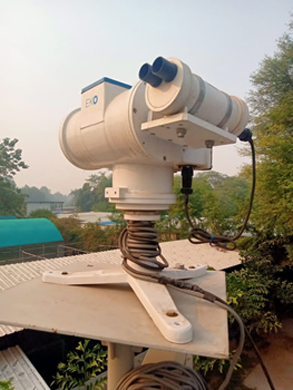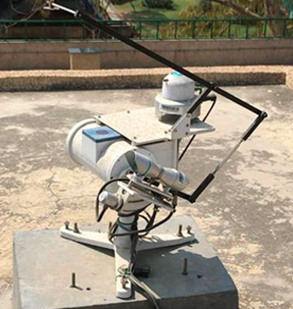The International Commission on Illumination (CIE) in France has defined a set of 15 general sky types that represent different sky conditions. These models help to assess sky luminance under various weather conditions ranging from clear to overcast. Understanding sky conditions helps to design appropriate daylighting measure for the building, i.e., anything that would allow for natural light to enter the building for the occupants’ purposes. It can also be used to design outdoor public spaces, such as plazas and community gathering places. The unavailability of measured luminance data limits the use of the CIE sky model for passive window design in many countries. The CIE Standard Sky type for any Indian location is fairly unidentified.
This study at MT CoE is first of its kind to happen in India currently. It is likely to help us predict with certainty, what kind of standard sky conditions prevail on our current location of data recording The Centre has begun analysis of the recorded data, by conversion of sky scan patterns to CIE standard sky formats.
Different parameters of sky luminance such as illuminance and irradiance, both direct and diffused in nature, are also influenced by weather and climate. With quantitative analysis via robust data monitoring, we also aim to assess the linkage of climate change to sky condition parameters to determine how it may affect our daylight use inside buildings. The current scope and anticipated outcome of the study is at par with the international standards for carrying out daylight and sky model research work. It will enable building practitioners to use CIE Standard sky types for daylight simulation in India.
The Sky Scanner measures Luminance and Radiance of the sky hemisphere.
The device is used to study the radiation contribution of the diffuse sky which is an important parameter for building automation, building design, daylight software modeling and light pollution research.
The sensor with two highly sensitive detectors, and viewing angle of 11 degrees captures the hemisphere in 145 sequential steps. Two-axis control of the sensor and precise tracking mechanism helps in achieving a high durability and repeatability.
Measurements are based on the CIE108-1994 recommendation (CIE - International Commission on Illumination, IDMP - International Daylight Measurement Program).
The luminance values are measured per kcd/m2 and radiance value per W/m2/sr.

The Solar Monitoring Unit consists of a pyranometer one a pyrheliometer on a sun-tracking mechanical system.
The Pyroheliometer measures the Direct Normal Irradiance (DNI) of the sun, whereas the Pyranometer measures the Diffuse Horizontal Irradiance (DHI) of the sky.
Using these recorded parameters, an empirical model of sky brightness can be computed for the Indian sky.
